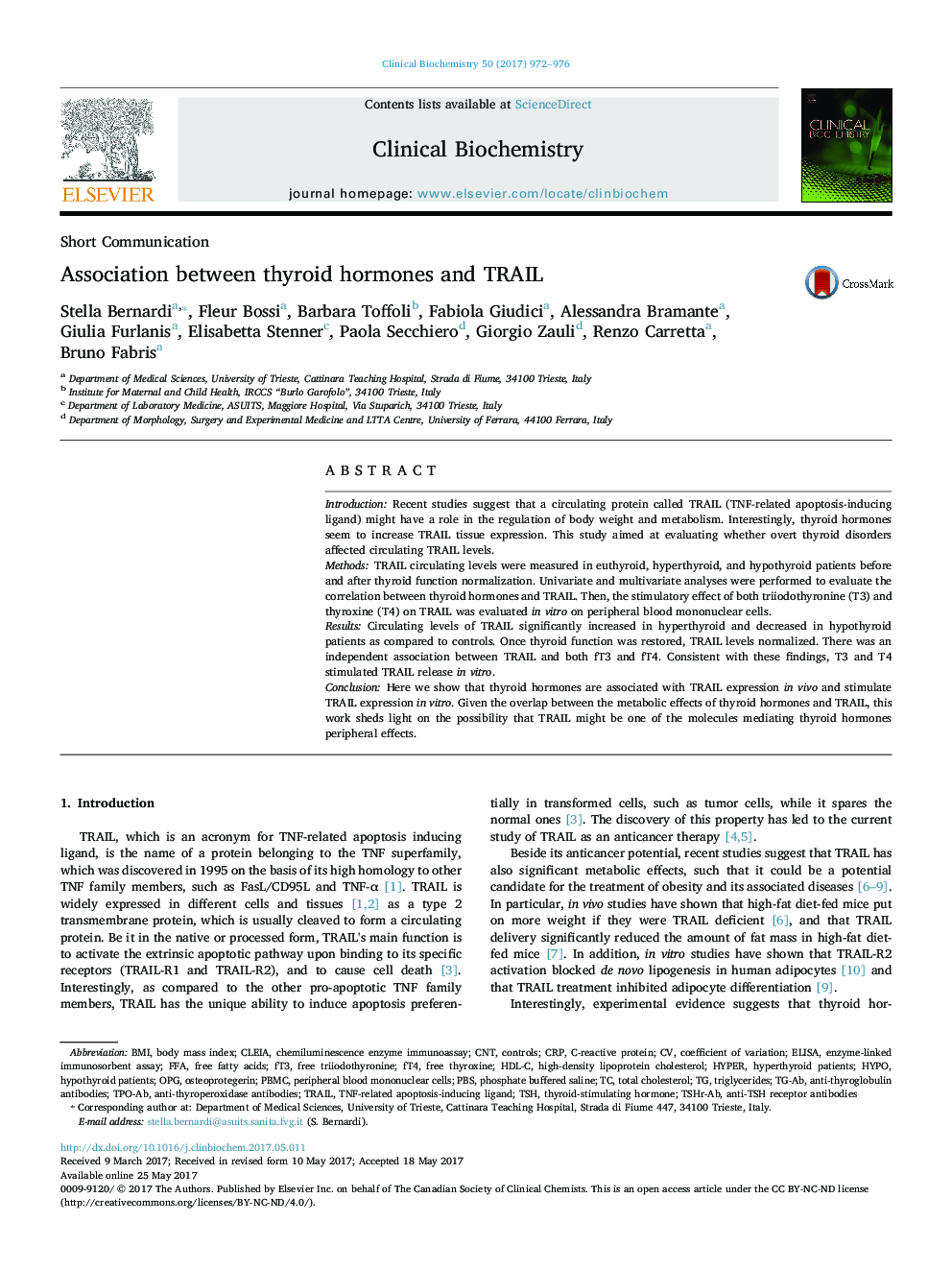| کد مقاله | کد نشریه | سال انتشار | مقاله انگلیسی | نسخه تمام متن |
|---|---|---|---|---|
| 5509937 | 1538853 | 2017 | 5 صفحه PDF | دانلود رایگان |

- Circulating TRAIL significantly increases in hyperthyroid and decreases in hypothyroid patients.
- There is an independent association between TRAIL and both fT3 and fT4.
- T3 and T4 stimulate TRAIL release on peripheral blood mononuclear cells in vitro.
IntroductionRecent studies suggest that a circulating protein called TRAIL (TNF-related apoptosis-inducing ligand) might have a role in the regulation of body weight and metabolism. Interestingly, thyroid hormones seem to increase TRAIL tissue expression. This study aimed at evaluating whether overt thyroid disorders affected circulating TRAIL levels.MethodsTRAIL circulating levels were measured in euthyroid, hyperthyroid, and hypothyroid patients before and after thyroid function normalization. Univariate and multivariate analyses were performed to evaluate the correlation between thyroid hormones and TRAIL. Then, the stimulatory effect of both triiodothyronine (T3) and thyroxine (T4) on TRAIL was evaluated in vitro on peripheral blood mononuclear cells.ResultsCirculating levels of TRAIL significantly increased in hyperthyroid and decreased in hypothyroid patients as compared to controls. Once thyroid function was restored, TRAIL levels normalized. There was an independent association between TRAIL and both fT3 and fT4. Consistent with these findings, T3 and T4 stimulated TRAIL release in vitro.ConclusionHere we show that thyroid hormones are associated with TRAIL expression in vivo and stimulate TRAIL expression in vitro. Given the overlap between the metabolic effects of thyroid hormones and TRAIL, this work sheds light on the possibility that TRAIL might be one of the molecules mediating thyroid hormones peripheral effects.
Journal: Clinical Biochemistry - Volume 50, Issues 16â17, November 2017, Pages 972-976